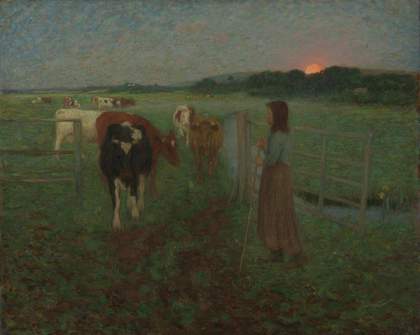Biography
Edward Stott (24 April 1855 – 19 March 1918) was an English painter of the late Victorian to early twentieth century period. He trained in Paris under Carolus Duran and was strongly influenced by the Rustic Naturalism of Bastien-Lepage and the work of the Impressionists, which he married with the English landscape tradition of John Linnell and Samuel Palmer. In the mid-1880s he settled in rural Sussex where he was the central figure in an artistic colony. His forte was painting scenes of domestic and working rural life and the surrounding landscapes often depicted in fading light. Stott's work achieved critical and commercial success at home and in Europe in his lifetime but his style of painting became unfashionable in the aftermath of the Great War and much of his work is now neglected and unconsidered.
This biography is from Wikipedia under an Attribution-ShareAlike Creative Commons License. Spotted a problem? Let us know.
Read full Wikipedia entry

